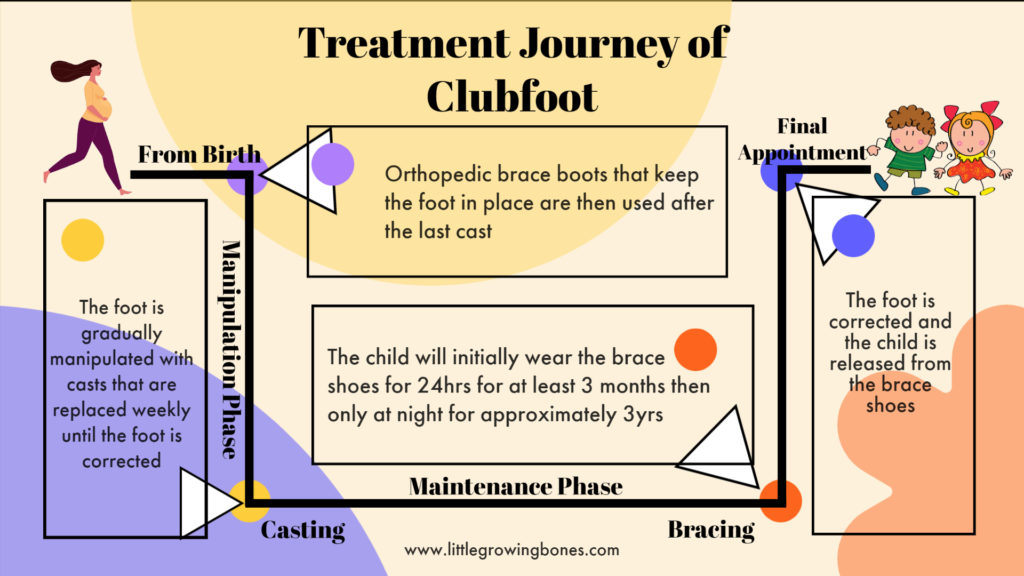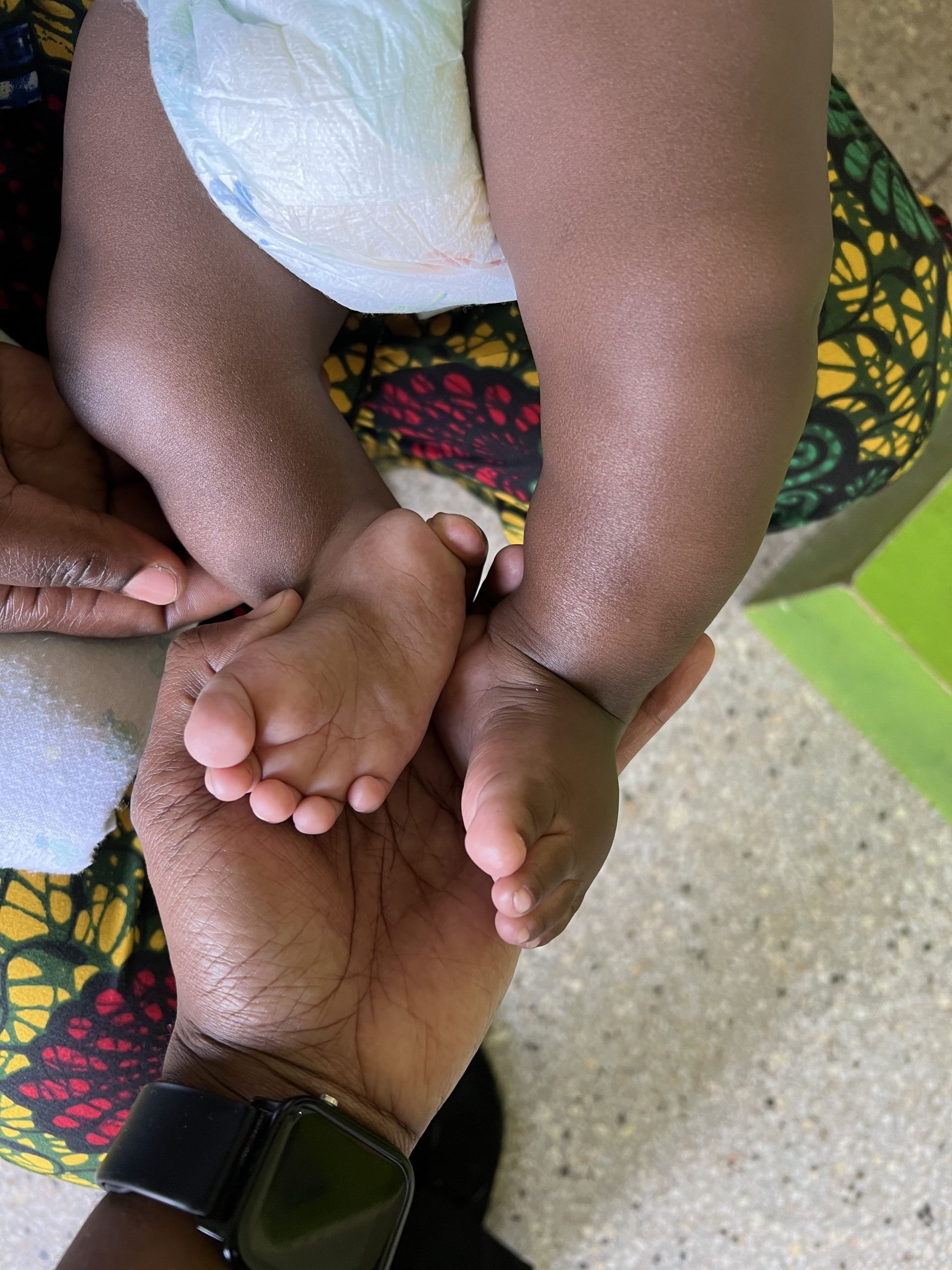Clubfoot deformity in children refers to a deformity of the foot where the foot is twisted such that the sole of the foot is facing up and the upper skin of the foot is instead facing down. Club foot deformity derives it’s name from the golf club.
This is one of the most common foot deformities babies are born with.
In this article, we shall talk about the features of clubfoot, how it is investigated, and the different types of treatment for clubfoot.
Sometimes the foot is twisted so much that it looks like it’s upside down.
Components of clubfoot
There are four distinct features of clubfoot and the presence of all four confirms a foot to be clubfoot. These are summarised in the acronym CAVE which means, cavus, adducts, varus and equinus.
These features are represented in the foot as below.
- Medial crease.
A medial crease is a deep fold on the inner part of the foot. This is what causes the cavus. Cavus means a cave, so the foot has what appears like a small cave in the middle.
- Posterior crease
A posterior crease is a deep fold at the back of the foot where the heel cord passes. This happens as a result of tightness and shortening of the heel cord leading to equinus deformity.
Equinus means the back of the foot is off the ground and the baby can only step on their toes.
- Forefoot adductus
This means that the front part of the foot is twisted to look inwards. This makes the front of the foot look like pigeon toes.
Do you want to see a paediatric orthopaedic surgeon?
Types of clubfoot
Clubfoot is divided into two major groups.
- Idiopathic clubfoot.
This is the most common kind of clubfoot. The exact cause is unknown. These feet are usually more supple, and flexible and the treatment of this is often straightforward.
- Atypical clubfoot.
Atypical clubfoot is sometimes called complex clubfoot or syndromic clubfoot. It is the kind that is associated with deformities of bones or issues with the nervous system. Treatment of such feet is often complicated.
Causes of clubfoot
The exact cause of clubfoot isn’t known. When the cause is unknown, it is called idiopathic clubfoot. However there are risk factors for clubfoot.
These include;
- Developmental issues of the musculoskeletal system.
Children with issues in the bones and muscles like the absence of some of the bones of the legs can put these children at risk of clubfoot.
- Developmental issues on the nervous system.
An issue in the spinal cord, brain, or even the nerves going to the legs increases the risk of the child being born with clubfoot.
- Reduced space in the uterus and low levels of amniotic fluid can put the child at risk of getting clubfoot.
- A positive family history of clubfoot puts the child at risk of clubfoot.
Investigation of clubfoot.
Even though clubfoot is clinically diagnosed after the child is born, it can be diagnosed before the child is born.
- Prenatal ultrasound.
This is an ultrasound that the mom does while still pregnant to check the state of the child. This ultrasound scan is able to confirm the presence of a clubfoot.
Treatment of clubfoot deformity
The mainstay of treatment of clubfoot in babies and young children is manipulation and casting by the Ponsetti technique.
The manipulation is done serially in order to stretch out the tight structures around the foot and allow the foot to face the right position.
This treatment involves stretching the foot and then the foot is held in a cast in that acceptable position. This is done over time until a good position of the foot is achieved.
The total Treatment often will last about 3 years.
The initial treatment with casts lasts about 8 weeks.
After that, the treatment is with boots and bars which are special shoes on a bar that the child will initially wear for 24 hours for the first 3 months then only at night until they are bout 3 to 4yrs.

When to start treatment for clubfoot deformity
Treatment for clubfoot is started early, normally at about the second week of life.
The aim is to make sure all the treatment is done by the time the child is walking and that the child has a normal foot to walk on.
What are the long-term effects of clubfoot deformity?
- The affected foot could be stiffer than the other
- The affected foot could be slightly smaller than the other foot by perhaps a shoe size.
- Recurrence of clubfoot. In some people even with correct treatment of the clubfoot, the deformity could try to recur.
In conclusion, clubfoot is a common foot deformity in children. Often the cause is not known but there are a few risk factors.
Often diagnosed at birth but it can also be diagnosed with prenatal ultrasound. Treatment comprises manipulation and casting and then followed by special boots on a bar.
